Mariah Reading
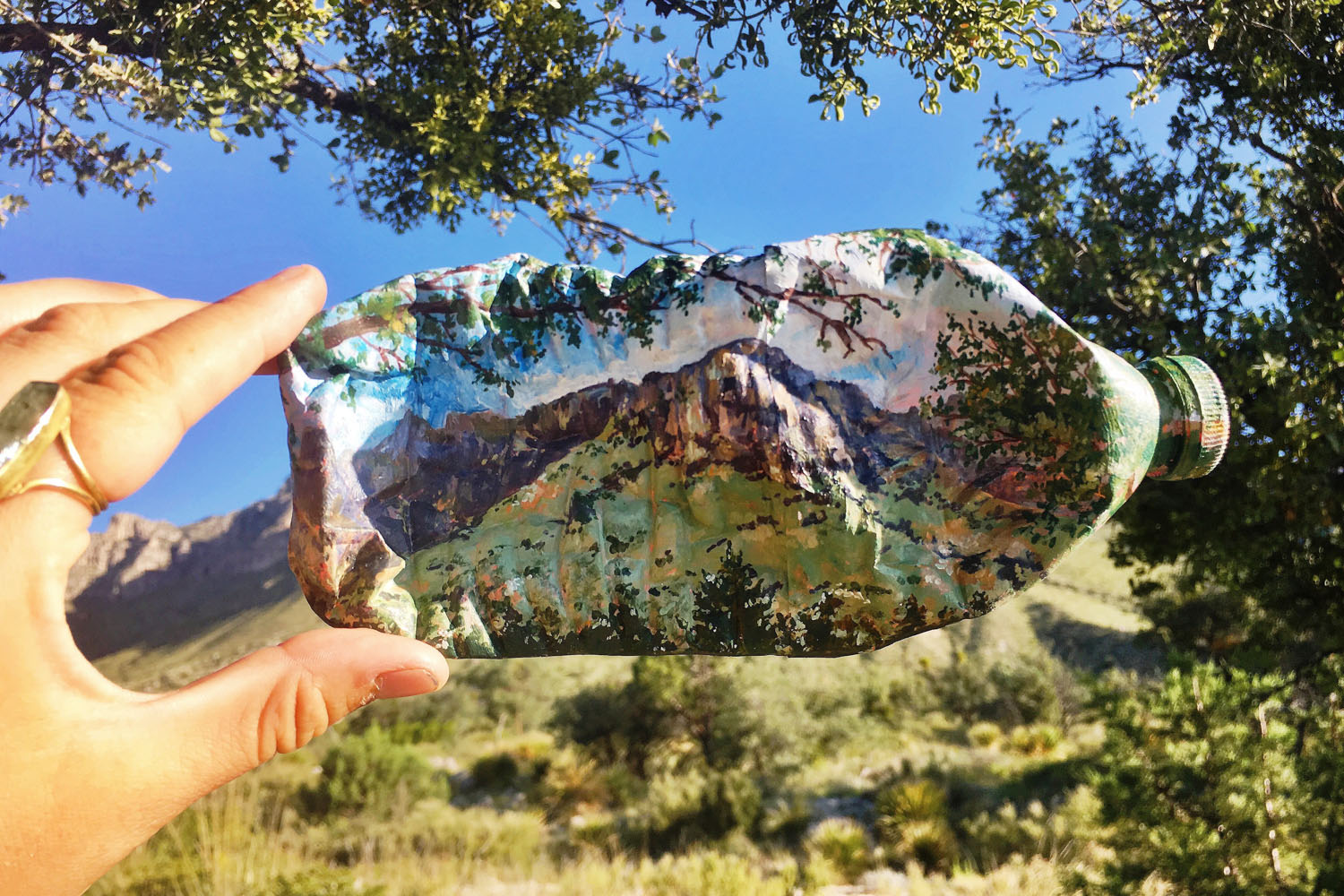
Mariah Reading
Painter and Mixed Media Artist
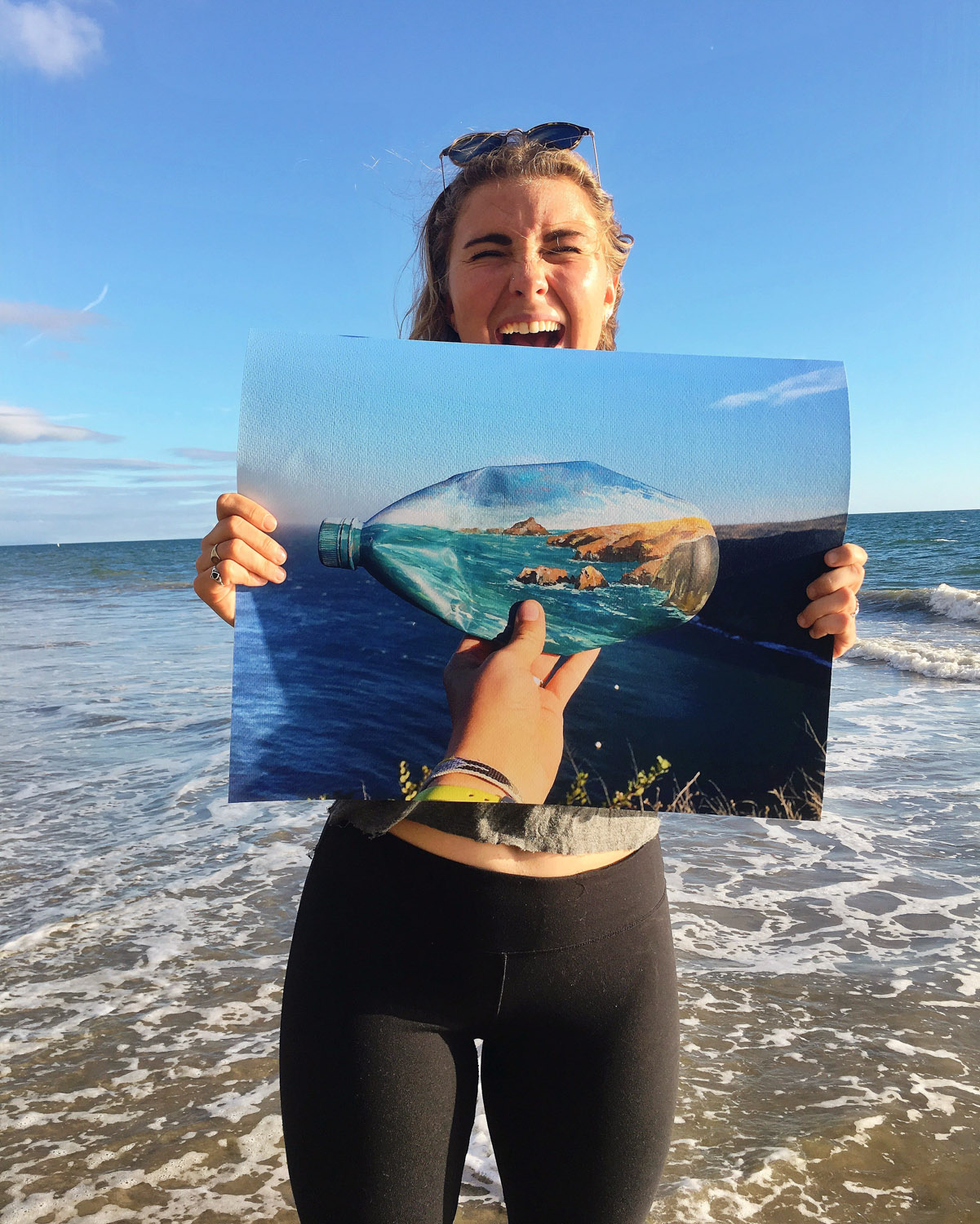
Mariah holding a print of acrylic on Evian bottle found in the Channel Islands National Park, 2017
Mariah Reading’s art reflects the landscapes that surround her. She constantly questions whether she is separate from her environment, or integrated within it. This relationship comes to focus in her series of Recycled Landscapes.
Her canvases come in unique forms, from old hiking boots and hubcaps, to found diving dins and wasted water bottles. It all calls our attention to what’s discarded and how the story of that object fits with the natural curves of a coastline.
We interviewed Mariah about her inspiration and process, and also found out at her upcoming Artist Residencies in two National Parks. It’s eco-art from a self proclaimed crazy trash lady, and we can’t get enough.
Find out more, in Mariah’s words:
Meet Mariah
What inspired you to start your Recycled Landscapes series?
I took a mold-making sculpture class in college and was appalled by the amount of waste produced. If the materials were not mixed in exactly the correct amounts they had to be thrown away.
Further, if any materials touched the liquid rubber or concrete they were deemed unusable and consequently thrown away. The number of chip brushes I saw tossed after a single use disturbed me. I was struck by the fact that the materials used to paint the landscapes would eventually end up in landfills.
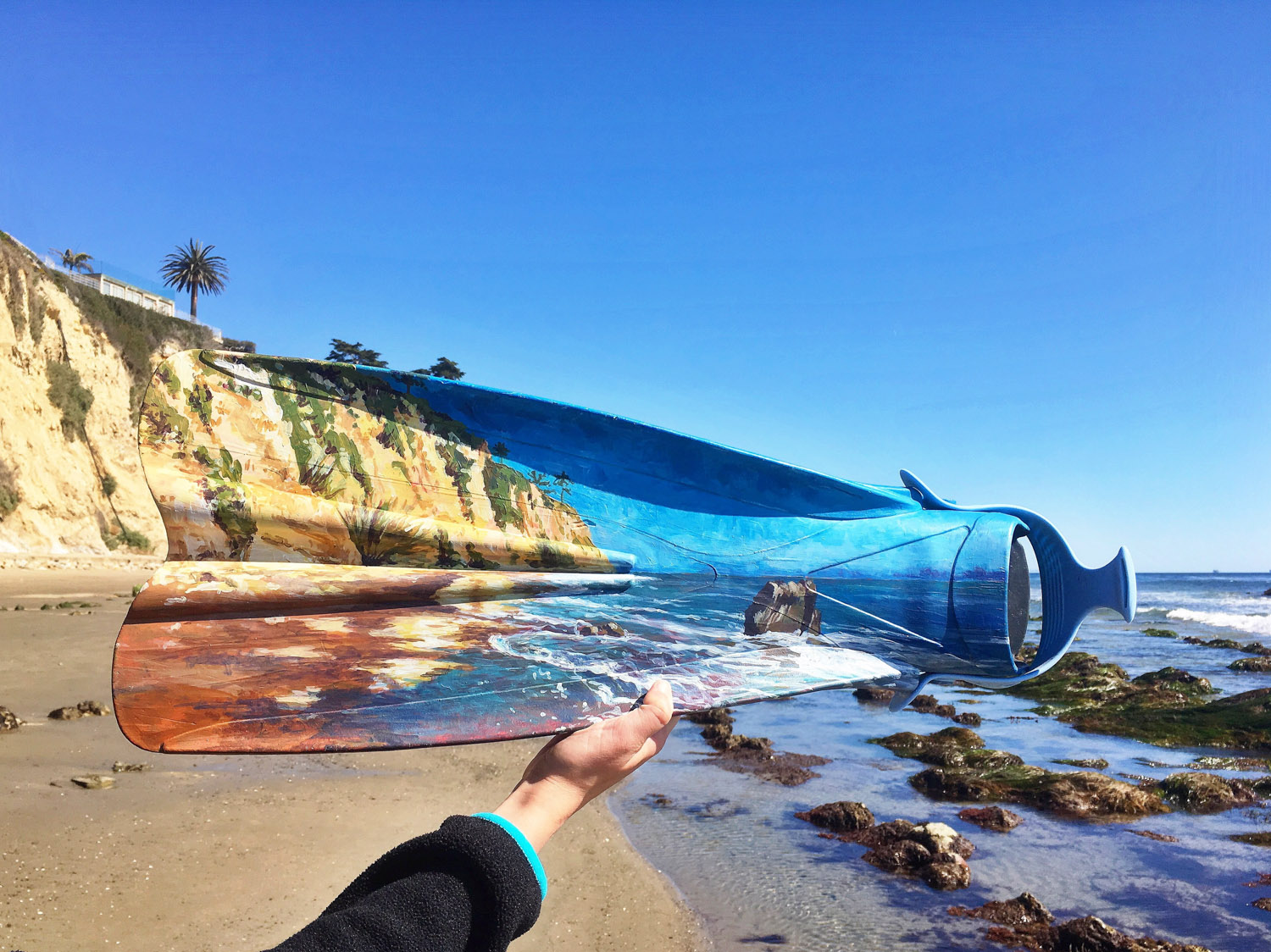
Shoreline Flipper – Acrylic on found diving fin, 2018
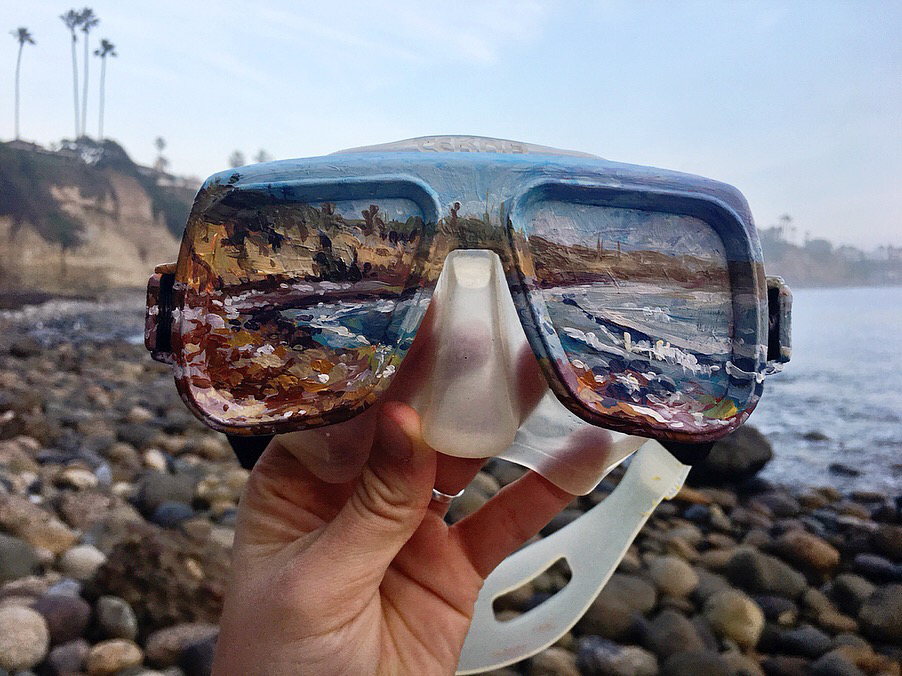
Pacific Beach Goggles – Acrylic on goggles found on Pacific Beach, San Diego, 2018
After graduating, I planned a Maine to California cross-country road trip. It happened to be the summer of the 2016 National Park Centennial, so the protected landscapes of the US were on my mind. Because of this, I decided to pivot my recent senior project to one that could reflect our preserved environments and began to collect trash in the National Parks.
Currently I am continuing to create canvases from collected trash, painting the landscapes on one side and leaving the reverse intentionally untouched and thus recognizable as trash. Once the painting is completed, I photograph the object and align it with the physical landscape to both obscure and highlight the discarded object.
You say that an important part of your work is the process behind the art, and that is largely unseen to the public. Can you tell us a bit about your creative process (especially in the outdoors using found objects)?
I have seen firsthand how students and the public can become immobilized by the thought of making art. When creating my own work I try to deconstruct this intimidating artistic process by documenting the steps I take.
I consider art to be a therapeutic exercise, so it doesn’t make sense that viewers are often only exposed to the last 1% of the process that ends up hanging on the wall. The other 99% of any project includes edits and repaints that are not visible. I hope that by revealing the process behind my work, viewers will be more encouraged to participate in the arts themselves.
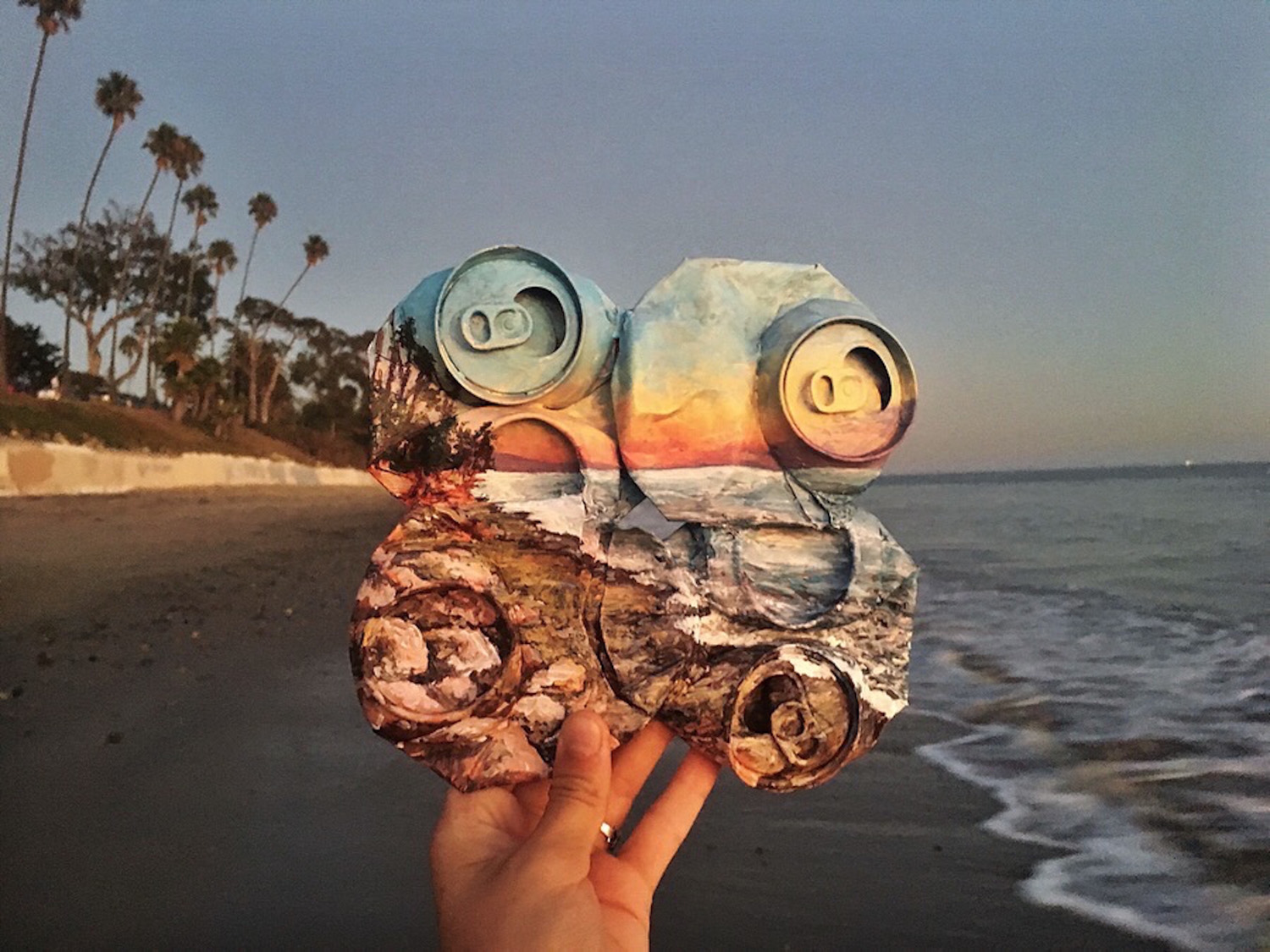
Sunrise to Sunset – Acrylic on Grand Canyon Beer Cans of Butterfly Beach, 2017
I hope that by revealing the process behind my work, viewers will be more encouraged to participate in the arts themselves.
I have been enjoying the process behind my recycled landscapes because each piece of trash tells a story on its own and leads me somewhere unplanned. One of my favorite parts has been getting to paint the debris en plein air. Getting to pick up a piece of trash, plop down, and paint where the trash was found is such a direct and satisfying experience. I believe that hiking out with the object is a meaningful and necessary step, whether it takes 20 mins or the entire day.
- Painting “Sunrise to Sunset” on Butterfly Beach
- Painting “Anacapa Buoy” on Anacapa Island in the Channel Islands NP
You also plein air paint in an altoid box. How does a creative experience differ when the canvas is so condensed? What do you like about the small scale?
I got this idea from Heidi Annalise Art. I was so transfixed by the mobility she was able to achieve from converting an Altoids tin into a mini easel! Plus the school I work at has a ban on gum, so I had been accumulating a handful of these tins anyway.
When I hike, it can be difficult to lug all of my paints, but the Altoids tins make painting on-the-go an effortless (and virtually weightless) experience! I pre-fill the tins with canvas paper and oil paints, which can stay usable up to a couple months when the tin is closed! It is easy to throw these tins in my backpack and be ready to go. These pieces tell about the process of art-making because the proof of creation is right there, as the paint palette and remnants of mixed colors remain in the bed of the tin.
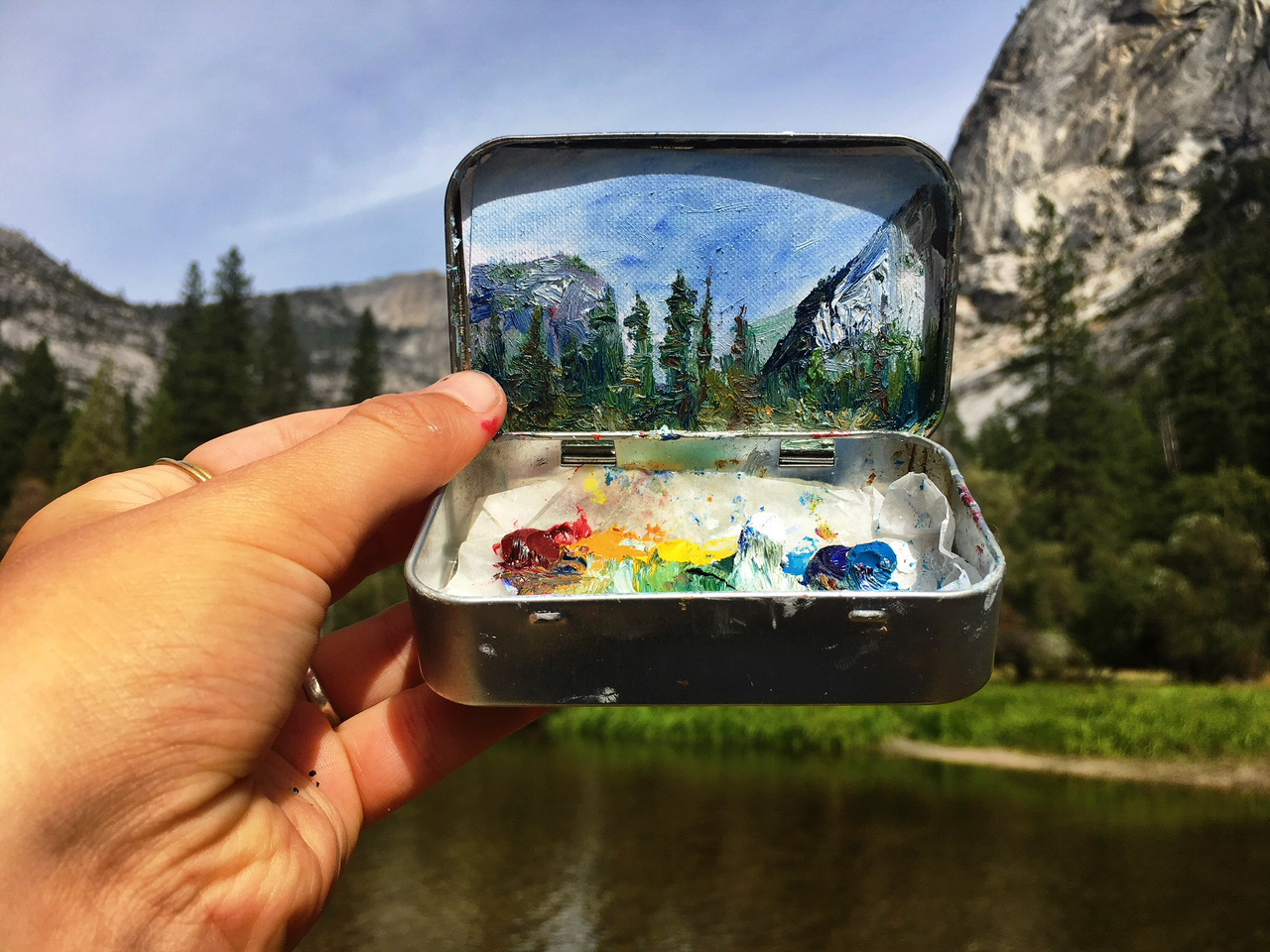
Altoids tin painting in Yosemite National Park
I appreciate the accessibility these paintings offer. The small canvas size makes painting approachable and bite-sized. When I visit vast landscapes, my senses are overloaded and it becomes difficult to hone in on the specific beauty around me. This practice has become a meditative process for me, where the world becomes quiet and I can just focus on what lies before me.
Tell us about your Artist Residencies in Denali and Zion National Parks.
Ah! I am beyond excited for both of these upcoming residencies. Zion was one of the parks I visited on my 2016 road trip, where all of this trash art first began. Coming from the scorching desert landscape of Utah, what a trip it was to see the teal waters of the Narrows and lush green trees contrasting against the red rocks. Green initiatives within and beyond the arts are efforts I take very seriously. Zion has taken great strides towards mitigating waste and promoting sustainability throughout the park, so I am looking forward to exploring those methods and responding to them with art. This residency is the entire month of September.
Leading up to Zion, I will be working in Denali during the summer solstice! I have never been to Alaska before so having a remote residency (no electricity, running water, or cell service plus bears) in the heart of Denali is such a treat. Similarly to Zion, Denali cares greatly for the environment and preserving such a pristine wilderness.
History has shown the impact art has on protecting the environment, so I feel excited to be a part of this opportunity.
In particular, what drew me to Denali was its involvement in a zero-landfill initiative through the National Parks Conservation Association and Subaru. To launch this large-scale endeavor three pilot parks were chosen to propel the efforts: Grand Tetons, Yosemite, and Denali. Of these three parks, Denali is currently the only one that has an AIR program! As part of the residency, I get to lead workshops and visit the recycling and waste management center. History has shown the impact art has on protecting the environment, so I feel excited to be a part of this opportunity.
If you’re ever felt transformed by a landscape, which one and why?
The summer of 2017 I worked as an Arts in the Parks Volunteer at the Guadalupe Mountains National Park in West Texas. Being from the Northeast I always considered myself an ocean woman and really had no clue what this landlocked, alpine desert location had in store for me. Little did I know the true impact the landscape would soon have one me.
The Guadalupe Mountains are the world’s most extensive Permian fossil reef, and I got to live inside this exquisite park throughout its monsoon season. Holy moly, getting to see a dynamic sunset, thunderstorm, or rainbow over the unique Texas mountain range completely changed my perspective of the arid Southwest. I often found myself screaming delightedly in my car driving back from picking up groceries because I was enamored and overcome by the sheer beauty.
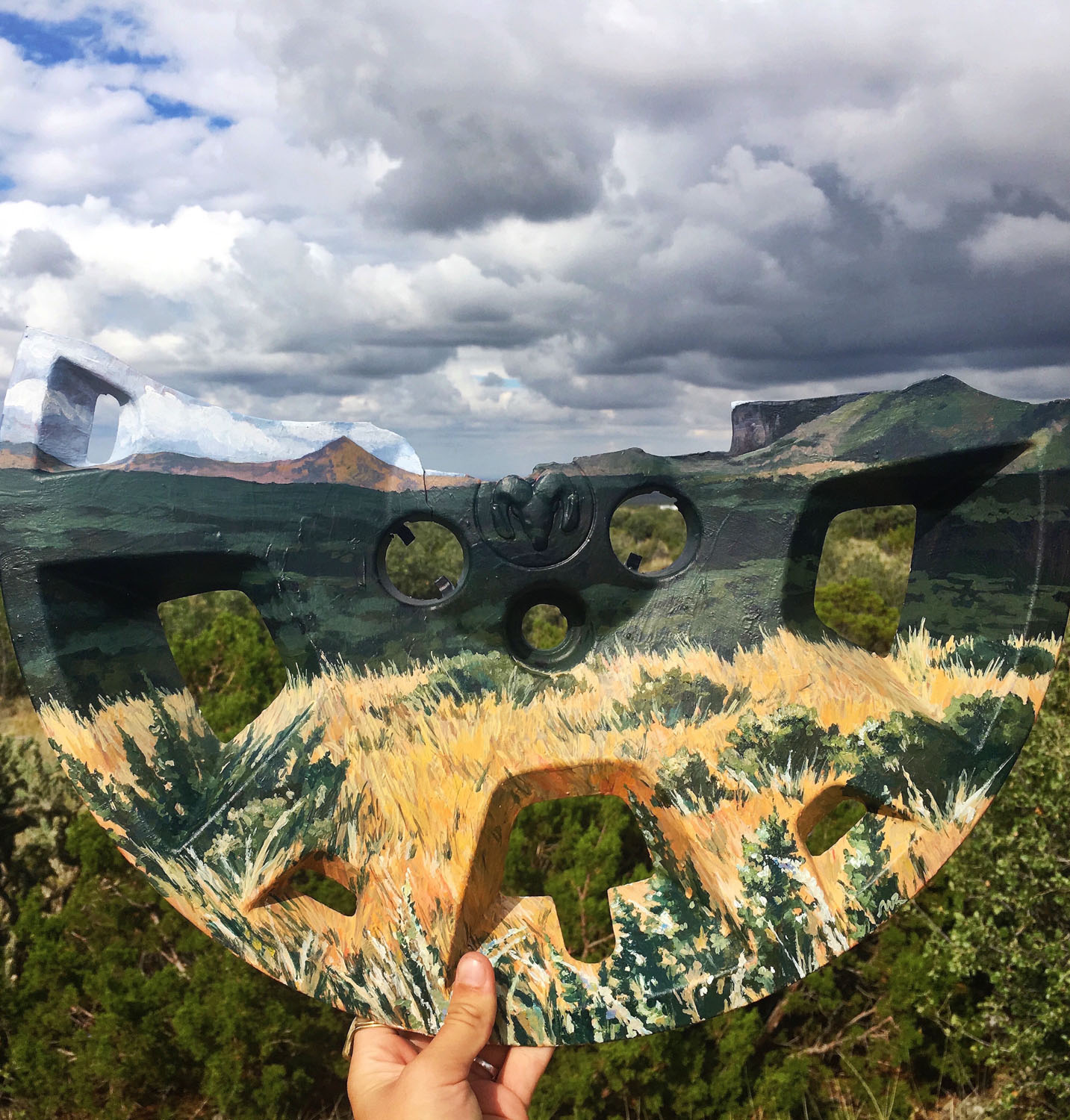
El (Hub)Capitan – Acrylic on half a hubcap found in the Guadalupe Mountains National Park, 2017
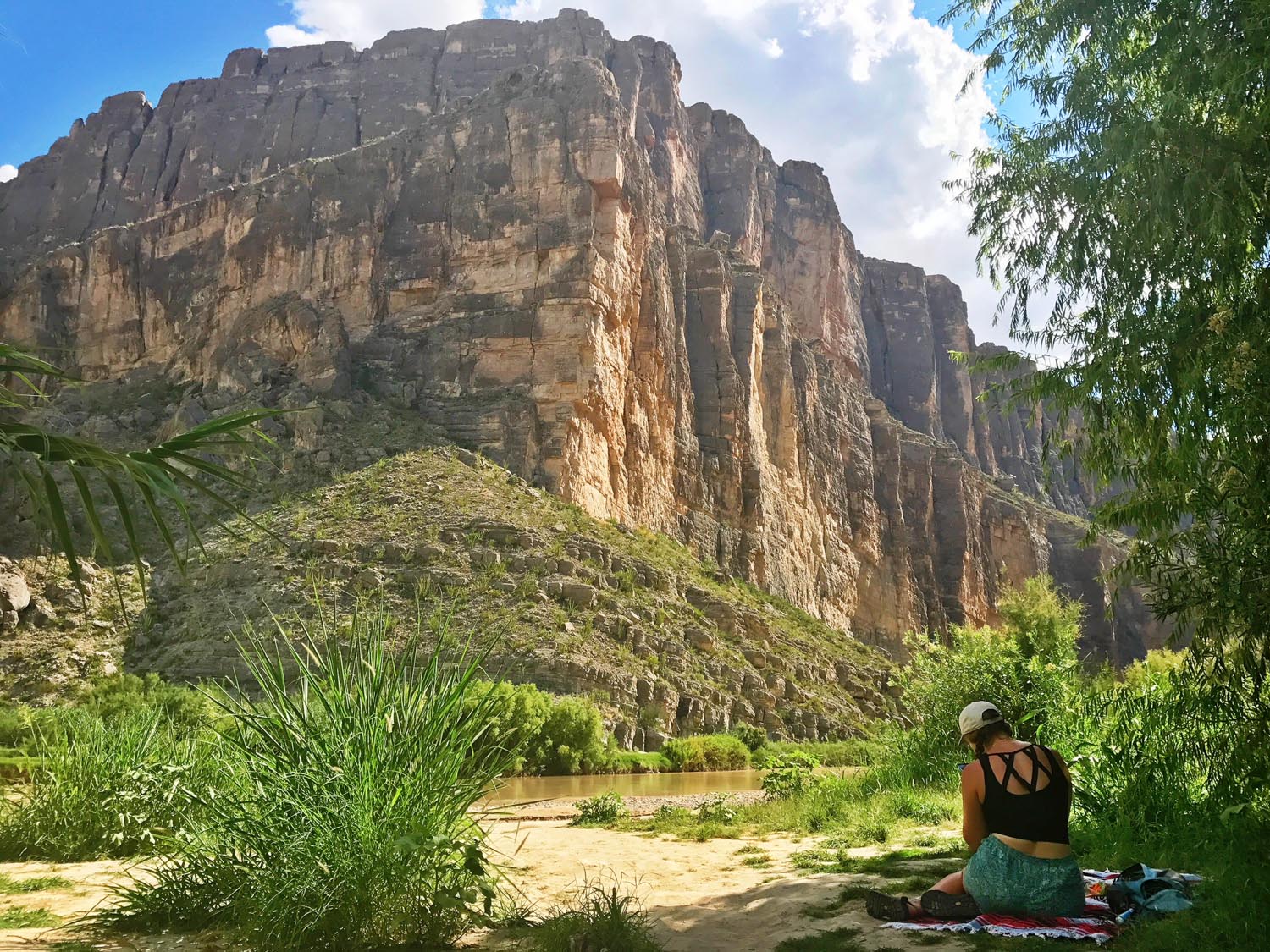
Painting in Big Bend, another Texas National Park
The alpine desert informed my art in such a way that I now have a greater appreciation for the neutral palette and subtle beauties ingrained within the Southwest.
I went in expecting to shrivel up from the heat. I actually Google Mapped the park before going and zoomed in to find the closest water source, which was about an hour away. What I did not realize was that the park had natural springs that popped up within the canyons and were shaded by lush oak and maple trees. It was a magical oasis!
Now I know that I am more of a big sky desert dirtbag than I ever was aware of before. Not only did the beautiful landscape blow me away, but also the beautiful people. I felt welcomed in a place so utterly unfamiliar. The alpine desert informed my art in such a way that I now have a greater appreciation for the neutral palette and subtle beauties ingrained within the Southwest.
Photos courtesy of Mariah Reading.
See more of Mariah’s work at mariahreadingart.com and find her on Instagram. Her work is available for purchase here.


[…] http://www.mariahreadingart.com, she-explores.com, http://www.facebook.com, […]